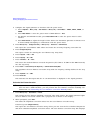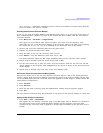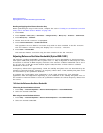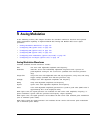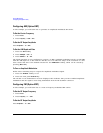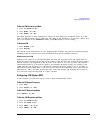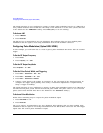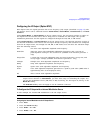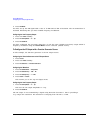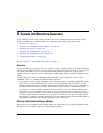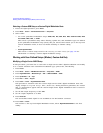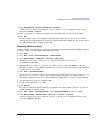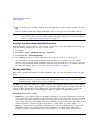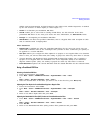
140 Chapter 5
Analog Modulation
Configuring Pulse Modulation (Option UNU/UNW)
The signal generator is now configured to output a 0 dBm, phase-modulated carrier at 3 GHz with a
0.25 p radian deviation and 10 kHz rate. The shape of the waveform is a sine wave. (Notice that sine
is the default for the
ΦMWaveform softkey. Press More (1 of2) to see the softkey.)
To Activate ΦM
1. Press ΦMOffOn.
2. Press
RF On/Off.
The ΦM and RF ON annunciators are now displayed. This indicates that you have enabled phase
modulation and the signal is now being transmitted from the RF OUTPUT connector.
Configuring Pulse Modulation (Option UNU/UNW)
In this example, you will learn how to create a gated, pulse-modulated RF carrier with an external
trigger.
To Set the RF Output Frequency
1. Press Preset.
2. Press
Frequency > 2 > GHz.
To Set the RF Output Amplitude
Press Amplitude > 0 > dBm.
To Set the Pulse Period, Width, and Triggering
1. Press Pulse > Pulse Period > 100 > usec.
2. Press
Pulse > Pulse Width > 24 > usec.
3. Press
Pulse > Pulse Source > Int Gated.
4. Connect a TTL signal to the Trigger In connector on the rear panel of the signal generator. To
configure the trigger signal polarity, Press Utility > Instrument Adjustments > Signal Polarity
Setup > Trigger In Polarity.
The signal generator is now configured to output a 0 dBm, pulse-modulated carrier at 2 GHz with a
100-microsecond pulse period and 24-microsecond pulse width. The pulse source is set to internal
gated. (Notice that Internal Free Run is the default for the
Pulse Source softkey.)
To Activate Pulse Modulation
Follow these remaining steps to output the pulse-modulated signal.
1. Press
Pulse Off On to On.
2. Press
RF On/Off.
The Pulse and RF ON annunciators are now displayed. This indicates that you have enabled pulse
modulation and the signal is now being transmitted from the RF OUTPUT connector. The TTL trigger
signal state will control pulse modulation output.



